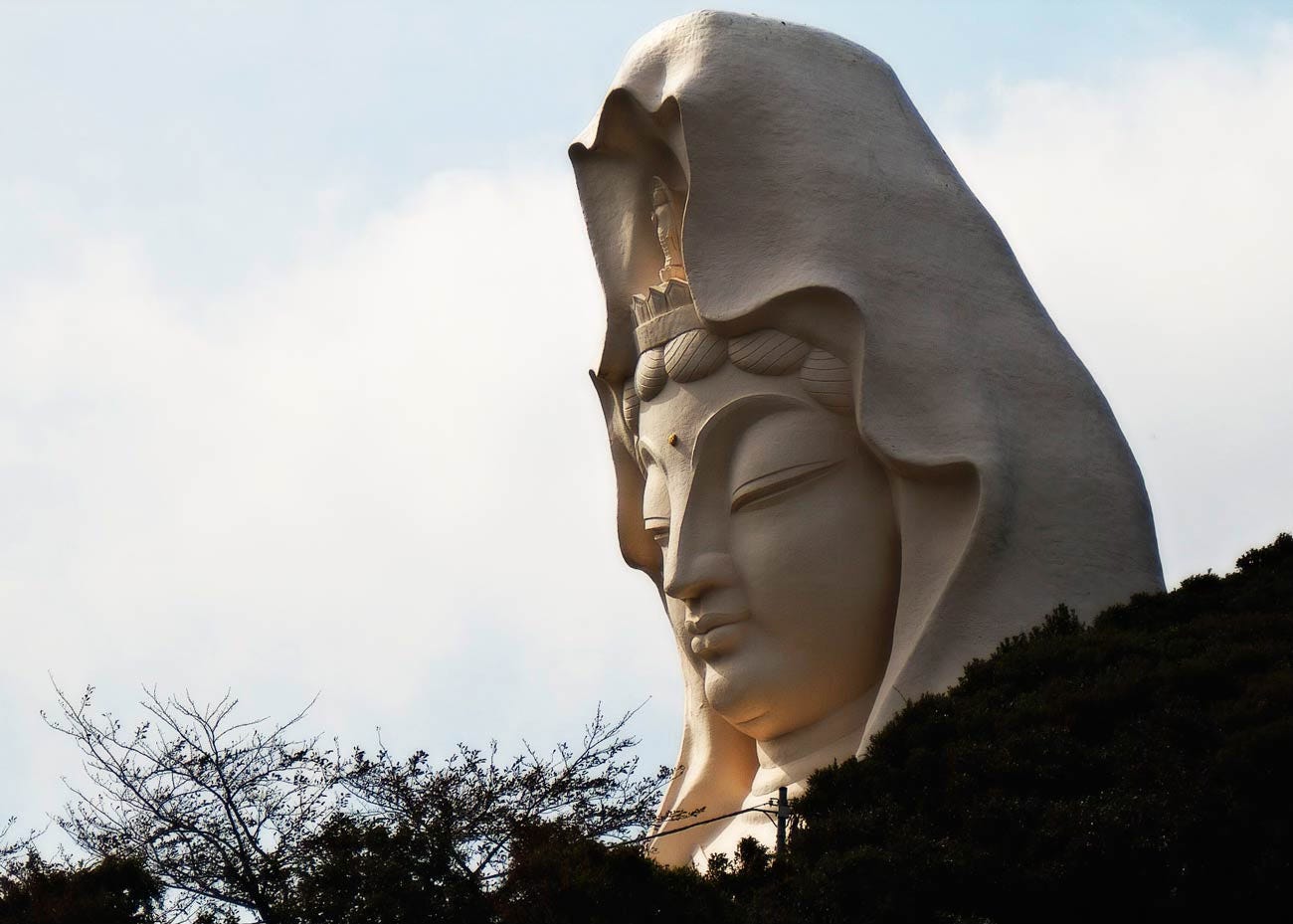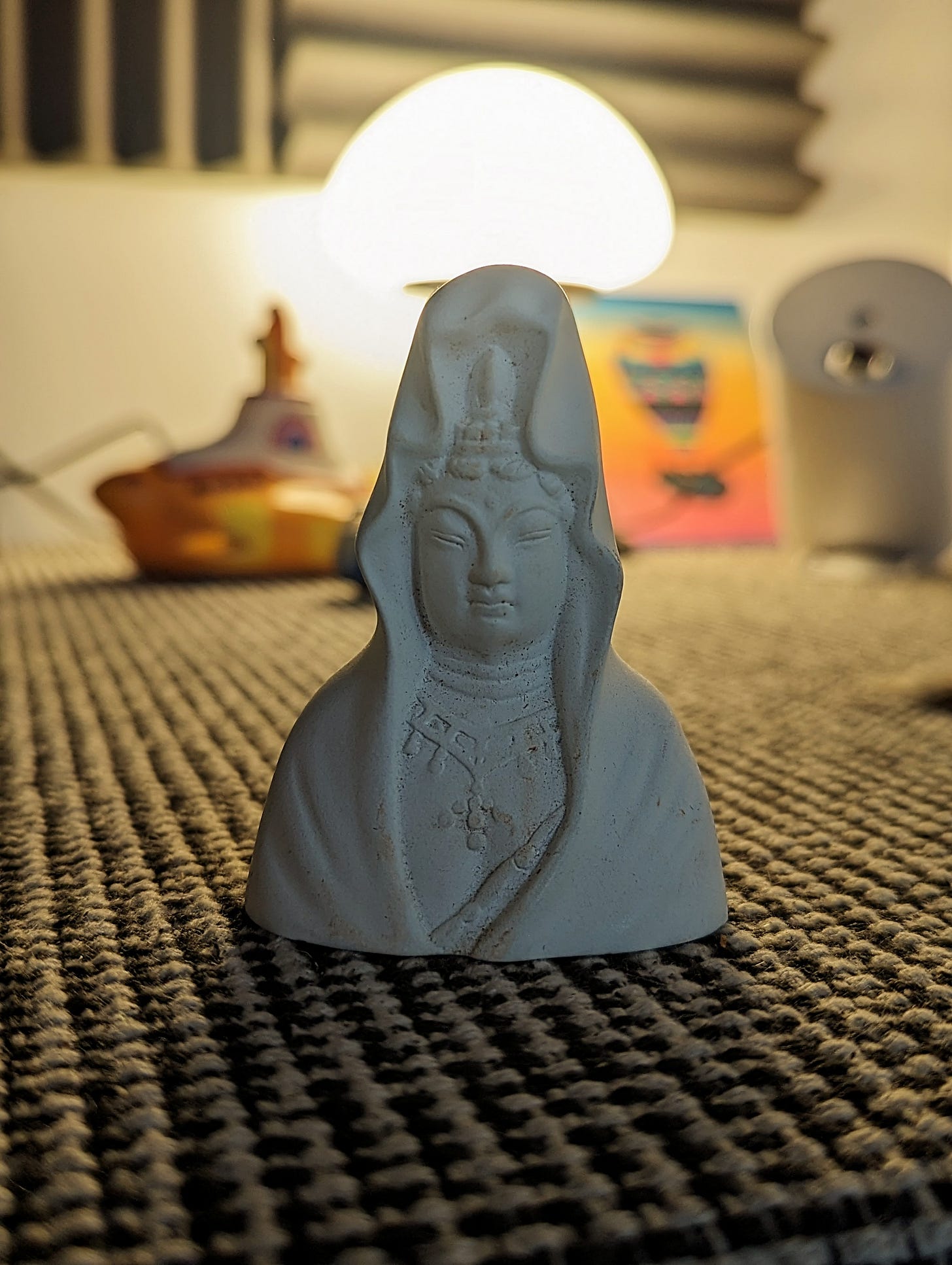Sounds from my Archive is a series in which I’ll be selecting a recording from my archive and sharing with you the tale of its coming into being…

Sitting peacefully amongst the tree line of Mount Mugaso, glistening white, head bowed gently towards the ocean, overlooking the coastal town of Kamakura is Ōfuna Kannon Temple (大船観音寺) — a Buddhist temple of the Sōtō school of Zen, just south of Tokyo in the Kanagawa Prefecture, Japan.
This magnificent, robed giant, depicts the Bodhisattva Kannon (観音) — the Goddess of Mercy, one of the most popular and frequently depicted deities in Japanese Buddhism.
Ōfuna Kannon-ji stands 25m tall and has been here for the best part of a century. Magnificent when viewed from the eyes of passengers aboard the the JR-Line train approaching Ōfuna Station, from a far we can see the presence of the deity engraved into the landscape, standing giant within the mountain. Though in fact it is but a bust, and a hollow one too…
Kamakura’s Magnificent Monument to Peace
The name Kannon, or Guanyin, itself loosely translates to “she who perceives the sounds of the world” which is fitting for this particular story…
I had travelled here from Kamakura to meet with Shoubou Sakurai, a priest of the temple, who had kindly granted me permission to record his midday prayer ceremony. I had very little Japanese conversation skills beyond a simple welcome and farewell, but enough it seemed, to be trusted to accommodate me and my microphones inside the sacred statue to record this intimate solo performance.
The intensity of his tsuri-daiko (太鼓) playing was entrancing. I was hypnotised further by the keisu (磬子) bell, ringing its timely tone beneath ancient recitations. Enclosed in a stone hall maybe 20m wide, I felt the pure energy resonate through my very body. Fortunate enough to have time to prepare my microphones well in advance, I was able to to capture the unique acoustics of this space using a Mid-Side recording approach (to those in the know, kudos ;) - to those uninitiated, it’s a slightly nerdy recording technique that allows you to really explore the spatial properties of the sound and environment you are recording.
This recording features in the Mat Eric Hart Japan Collection — a collection of digital audio recordings made in Japan between August and October 2019. This project was supported by the British Library’s Sound Archive. The collection explores the relationship that exists between sound and spirituality in Japanese culture, documenting present day practices, rituals, performances and interactions with Japanese artists, festivals, folk culture and sacred spaces.
Sonic Tapestries is a reader-supported publication. To receive new posts and support my work, consider becoming a free subscriber.
Your kind support helps me to grow my audience and continue on my creative path.
If you do like reading along and want to help support my work further, please consider sharing this post with your friends, family and followers.
Thank you for being here with me.
Mat
🌻








Great recording. The mix of intensity in the chant with the underlying peacefulness of the bell (and the surroundings you describe) is an interesting contrast
Your Japan collection is quite impressive! Listening to the Kazusangenkai group now, amazing.